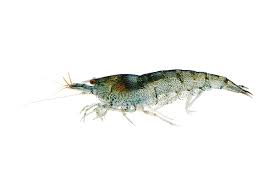Creatures living within the sea are one the greatest wonders of nature. Countless types of sea creatures live deep in the sea, and they are just marvelous that human physiology gets astonished when seeing them. The fans of vast aquariums are found in each corner of the world, particularly among children.
Therefore, people like to go to sea parks and aquariums along with their children to amaze themselves on weekends. One of the most popular and unique sea creatures is Freshwater shrimp. They can fascinate anybody through their color and behavior. Additionally, they are multipurpose.
You can either eat them in your diet or keep them in the aquarium at home for having an aesthetic look. The choice is yours. If you already have them in your house and want to know more about them. This article will be helpful for you to get to know about their care guide and other details. So, without any further ado. Let’s get straight into this.
What are Freshwater shrimps?
Freshwater shrimp are a diverse group of crustaceans that inhabit Freshwater environments such as rivers, lakes, and streams. They are closely related to marine shrimp and are found all over the world in a variety of habitats.
Some common types of Freshwater shrimp include the cherry shrimp, ghost shrimp, and Amano shrimp.
Freshwater shrimp can be kept in aquariums as pets and are popular among aquarists due to their unique appearance, behavior, and hardiness. They are also used as a food source in some cultures.
They can benefit an aquarium’s ecosystem, helping with algae control, and eating up debris and waste. They also reproduce well in captivity and can be a fun addition to any freshwater tank.
Are Freshwater shrimp easy to keep?
This is the most frequently asked question. The answer is yes, but under a condition. As most Freshwater shrimp species are relatively easy to keep in captivity, but their specific care requirements can vary depending on the species.
In general, most Freshwater shrimp are hardy and adapt well to a wide range of water conditions. They are also known to be easy to breed in captivity and can be a fun addition to any freshwater tank. However, it’s important to do research on the specific species you plan to keep, as some may require specific water parameters or care regimes.
Steps to take care of Freshwater shrimps.
Freshwater shrimp are a popular addition to many aquariums due to their unique appearance and behavior. However, in order to keep your shrimp healthy and happy, it’s important to provide them with proper care and maintenance.
The following steps are the essential steps that will help you to cater to Freshwater shrimps efficiently.
- Housing: The first step in caring for Freshwater shrimp is to provide them with a suitable tank or aquarium. The minimum recommended tank size for shrimp is 5 gallons, but the larger the tank, the more room they will have to swim and explore.
- A good rule of thumb is to provide at least 1 gallon of water per shrimp. It’s crucial to make sure the tank has a tight-fitting lid, as shrimp are excellent climbers and can escape easily.
- Filtration: Filtration is another important aspect of shrimp care, as it helps to keep the water clean and clear. A good filtration system will remove debris, waste, and harmful toxins from the water. A power filter, canister filter, or hang-on-back filter are all suitable options for a shrimp tank. This will help your shrimps to stay longer in the artificial pond or tank.
- Heating: Most Freshwater shrimp require a consistent water temperature between 72-78°F, so it’s beneficial for them to provide a heater for your tank. A submersible heater is a good option, as it can be placed inside the tank and is easy to adjust to the desired temperature.
- Lighting: Shrimp do not require a lot of light, but they do need some to thrive. A low-wattage LED light can be used to provide the necessary illumination. In this way, you can also make your children fascinated through these lights and encourage them to learn about these unique creatures.
- Substrate: The substrate in your shrimp tank should be fine and smooth, such as sand or gravel. This will help to prevent injury to the shrimp and make it easier for them to move around. Avoid using a sharp or rough substrate, such as crushed coral, as it can cause damage to the shrimp’s delicate exoskeleton.
- Decorations: Shrimp enjoy having places to hide and explore, so it’s important to provide them with a variety of decorations such as rocks, caves, and freshwater plants. Live plants are a great addition to a shrimp tank, as they not only provide hiding spots for the shrimp but also help to keep the water clean and clear.
- Food: Freshwater shrimp are opportunistic feeders and will eat a variety of food sources. They can be fed algae wafers, blanched vegetables, sinking pellets, and other commercial shrimp foods.
- It’s important to feed your shrimp appropriately, as excess food can lead to water quality problems. A good rule of thumb is to feed your shrimp only as much food as they can consume in 2-3 minutes.
- Water changing: Regular water changes are a crucial part of shrimp care. The frequency of water changes will depend on the size of your tank and the number of shrimp you have. It’s important to test the water regularly and ensure that the pH is between 6.5 and 7.5 and that the water is free of harmful toxins such as ammonia and nitrite.
- Breeding: Many species of Freshwater shrimp are easy to breed in captivity, but it’s highly recommended to provide them with the right conditions. Shrimp will breed most successfully in a well-established tank with good water quality, a consistent temperature, and a variety of food sources.
Conclusion:
In conclusion, freshwater shrimp are fascinating and beautiful creatures that can be a great addition to any aquarium. With proper care and maintenance, your shrimp will thrive and provide you with years of enjoyment. Remember to provide them with a suitable tank, filtration, heating, light, substrate, decorations, food, and regular water changes to keep them healthy and happy.



